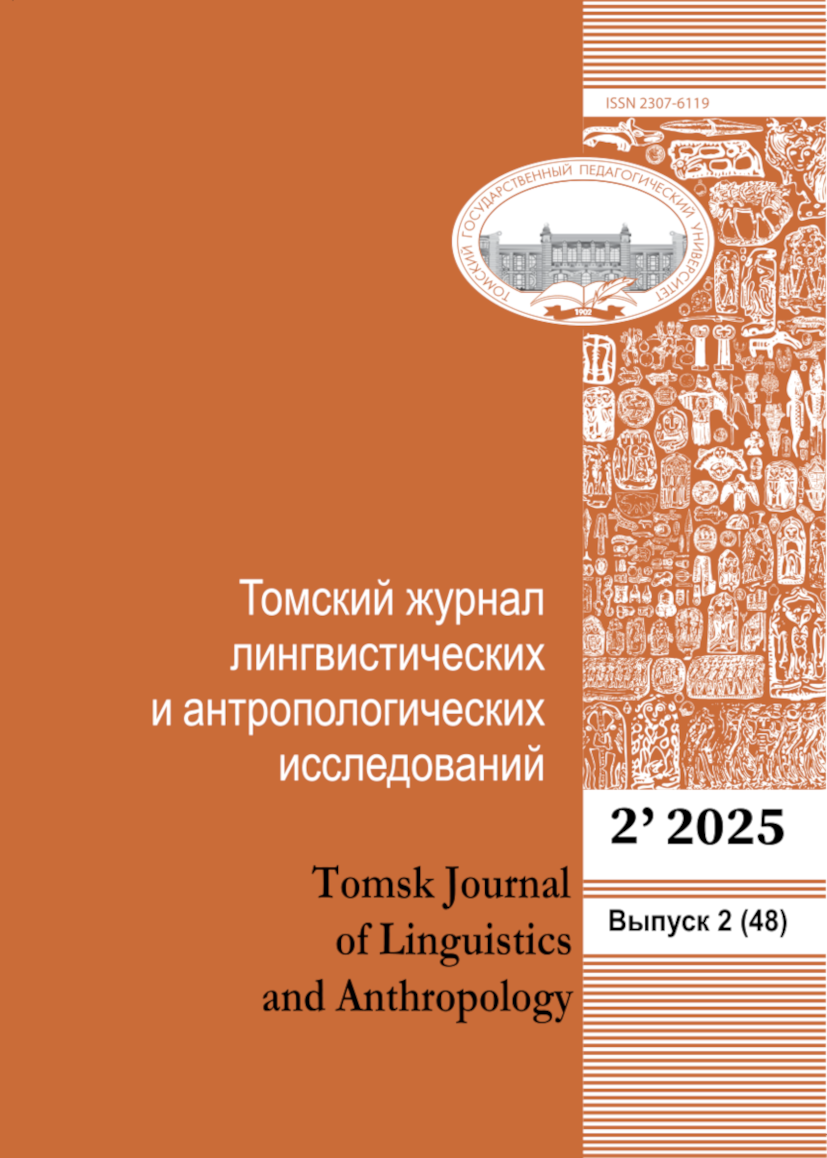The models of euphemistic nomination of wild animals in the Turkic languages of Southern Siberia (Altai, Khakass, Tuvan) are examined based on Yakut material. The lexemes that form euphemisms are divided into two groups: 1) lexemes denoting living beings (humans and animals); 2) lexemes characterizing these living beings (in terms of appearance, habitat, type of movement, sounds, smell, habits, impression). Both types of tokens can be used either independently or in combination with tokens from another group. Some patterns of such compatibility, the main models of nomination, and common and specific features of forming euphemisms for wild animals in the studied languages are shown. The models of euphemistic nomination in the studied South Siberian languages as well as in Yakut, are largely identical. There are also parallels to the Mongolian languages. However, there are also some differences in terms of the models and their specific lexical content. Of the 277 euphemisms, 32 parallels were found between the South Siberian languages studied, and seven terms linked them to the Yakut language. However, this fact still needs to be verified with more material. Euphemistic names contain linguistic and cultural information. The largest number of euphemisms refers to the bear and the wolf. Their replacement names represent all identified models. Some models are specific only to the names of these animals. For example, the names of the kinships reflecting the totemic ideas of the Siberian Turks function only as euphemisms for the bear and the wolf. The alternative names of these and some other animals (snakes among the Altaians and eagles among the Yakuts) depict them as older people with high social status, belonging to higher powers, and having special powers and abilities. The bear is accorded special respect. At the same time, the signs that characterize the bear and the wolf describe them as the most predatory, dangerous, and fearsome animals. According to the Tuvans, a bear can also be merciful and peaceful, as it rarely attacks first. Almost all wild animals encountered by humans have euphemistic names. In addition to the wolf and the bear, fox (in all languages), snake (Altai, Tuva), fur-bearing animals (Altai, Khakassia), moose (Khakassia), and other hoofed animals (Tuva) are also called by a variety of substitute names in the South Siberian languages.
 11-20
11-20


 21-34
21-34


 35-49
35-49


 50-63
50-63


 64-74
64-74


 75-85
75-85


 86-94
86-94


 95-107
95-107


 108-117
108-117


 118-128
118-128


 129-139
129-139


 140-152
140-152


 153-159
153-159


 160-176
160-176











